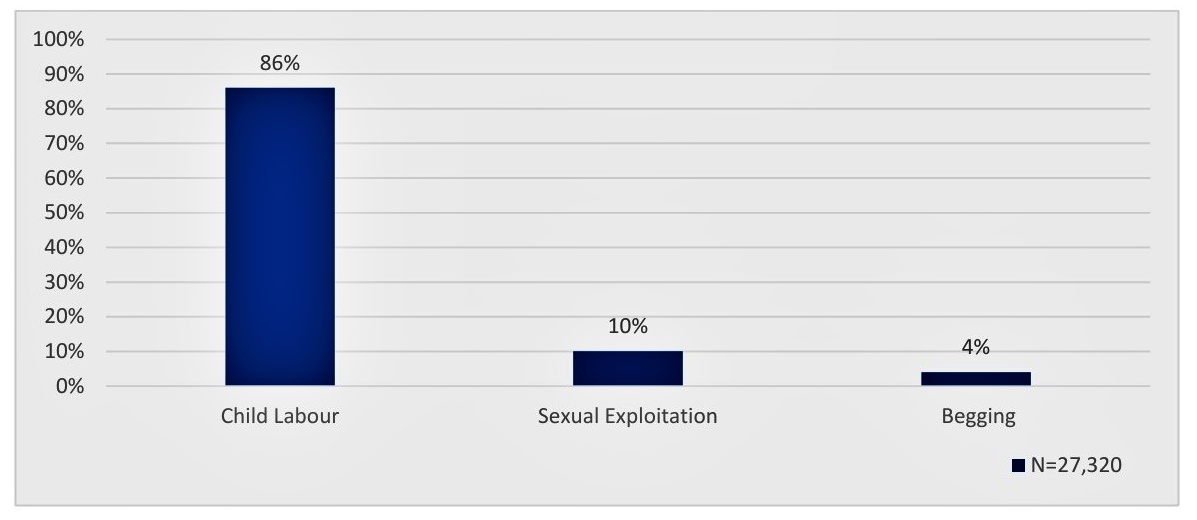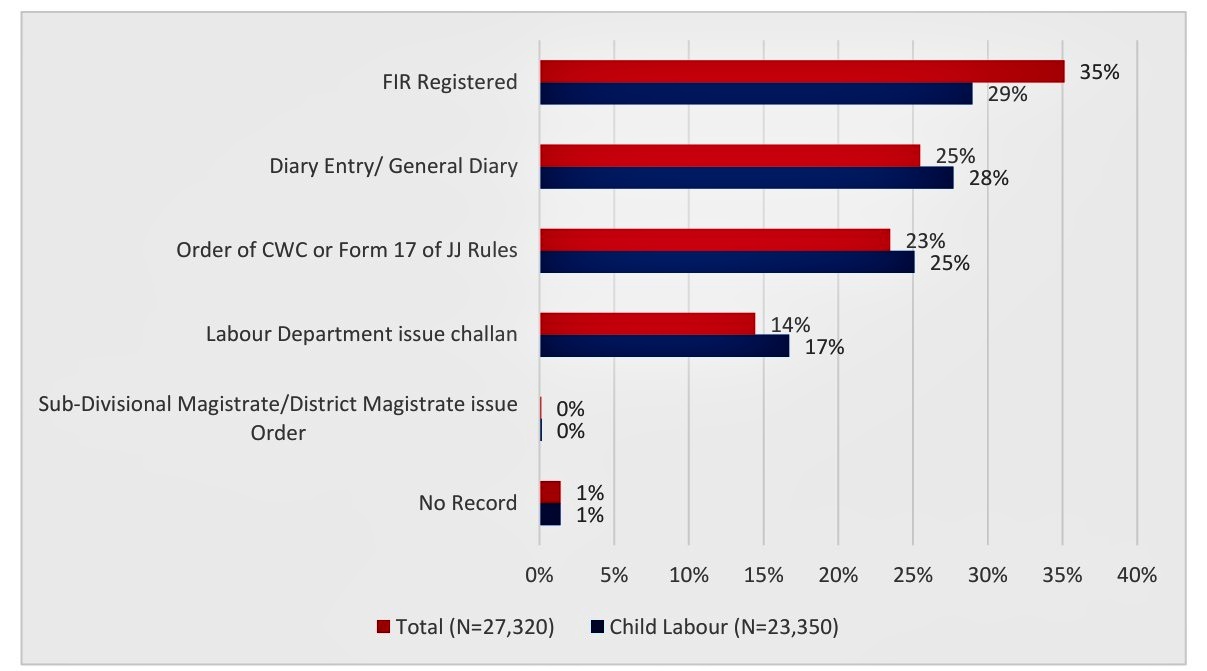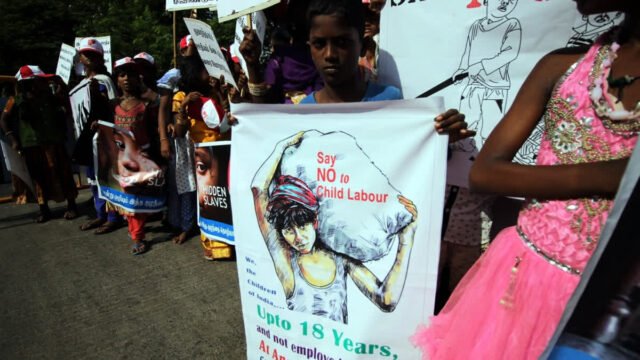By Santu Das
New Delhi: Telangana rescued the highest number of children across the country in 2024-25, with 11,063 out of 53,651 rescues nationwide, followed by Bihar (3,974), Rajasthan (3,847), Uttar Pradesh (3,804), Delhi (2,588), and other states.
These children were rescued from child labour, begging, and sexual exploitation from across the country from April 1, 2024, to March 31, 2025, revealed a study by a network working in the field of child rights.
Of the total rescues, more than 40,000 children were related to child labour, showing that it remains one of the biggest risks children face, as per the recent report by Just Rights For Children (JRC) partner India Child Protection. The JRC is a network of over 250 NGOs working for child protection across the country.
JRC, through its partner organisations, assisted in rescuing 53,651 child victims of trafficking and kidnapping (including 8,749 traced missing children). As per the report, of the 44,902 children rescued (excluding traced missing children), 90 per cent were from the worst forms of child labour.

Number of Rescue Operations Conducted (2024-25) (JRC)
As many as 2,971 children were rescued from sexual exploitation, with West Bengal standing out at the top with 1,005 rescues, followed by Bihar (454), Odisha (232), Maharashtra (194), and Rajasthan (191). These figures, as per the report, suggest concentrated efforts in areas known for high trafficking risks or existing vulnerabilities, such as border districts and urban red light areas.
With the help of law enforcement agencies, JRC partners carried out 27,320 rescue operations across 24 states and Union Territories during 2024-25. The highest number of those rescue operations were conducted in Telangana (7,632), followed by Uttar Pradesh (2,469), Rajasthan (2,453), and Madhya Pradesh (2,335)—all high-burden states for child labour.

Number of Children Rescued (2024-25) (JRC Report)
Of all rescue operations conducted across the country, 86 percent were related to child labour, highlighting it as the most prevalent and targeted form of exploitation, the report says. Sexual exploitation accounted for 10 percent of rescue operations, while begging made up the remaining 4 percent, it adds.
The report highlights the importance of legal measures, education, and rehabilitation in the fight against child labour and presents various recommendations. It underlined that without stringent legal action against violators, it will be challenging to reduce child labour.

Type of Legal Action Taken (2024-25) (JRC Report)
‘Need Robust Implementation As Demonstrated By Telangana’
Expressing concern over the matter, Ravi Kant, national convenor of JRC, told ETV Bharat, “While we have some of the world’s strongest child protection laws, we need to further strengthen the ecosystem for the protection of our children. Our national resolve to end child labour is yet to translate into concrete, lasting outcomes.”
The child rights expert asserted that as a signatory to ILO Convention 182, India is committed to eliminating the ‘Worst Forms of Child Labour’.
“While the rescue operations with the support of law enforcement agencies are impactful and widespread, gaps remain in policy enforcement and implementation. This report reaffirms that rescue alone is not enough, prosecution and legal accountability must be the foundation of any sustainable response,” he said.
Kant said the government must strengthen the prosecution machinery, establish a dedicated Child Labour Rehabilitation Fund, and adopt a comprehensive rehabilitation policy to truly empower rescued children and make them self-reliant.
Commenting on why Telangana topped the list in child rescue cases, as revealed in the report, the child rights expert said, “The fact that Telangana rescued the highest number of children in the past year proves that collaboration among all stakeholders, supported by the state government’s commitment and proactive approach, is the key to ending this crime against children.”
From swift action by law enforcement agencies in rescuing children to ensuring that every general diary (GD) entry is converted into an FIR and every perpetrator is arrested, it takes both will and coordinated effort at all levels to achieve such success, he said.
“India has some of the world’s strongest child protection laws; what we now need is robust implementation, as demonstrated by Telangana, to further strengthen the ecosystem for the protection of our children,” Kant said.
Recommendations By The Network
The JRC recommends strict enforcement of the existing laws, including the Child Labour (Prohibition and Regulation) Amendment Act 2016, relevant sections of the Bharatiya Nyaya Sanhita, and Juvenile Justice (Care and Protection of Children) Amendment Act, 2020.
It also recommends expanding the emerging high-risk sectors (for example, spas, massage parlours, orchestra troupes, placement agencies) through amendment to the Child Labour (Prohibition & Regulation) Amendment Act, 2016.
The network calls for mandatory FIRs, police action to arrest the employers and traffickers, and harsher penalties to safeguard and protect the rescued children and ensure these actions prevent their trafficking.
It also recommends greater liability – financial and legal – for employers across all levels of the supply chain with regard to illegal and criminal employment of underage children.
“Expanding on the employer responsibility, the government at all levels (central and state) as a responsible employer needs to rigidly implement a strict zero-tolerance policy regarding child labour in its procurement and supply chains. This involves comprehensive monitoring mechanisms to ensure compliance among vendors, with clear penal action for violations,” the report says.
The Law On Child Labour
The Child Labour (Prohibition & Regulation) Amendment Act, 2016 provides for complete prohibition of work or employment of children below 14 years in any occupation and process, and adolescents in the age group of 14 to 18 years in hazardous occupations and processes. The Act also provides for stricter punishment of employers for violation of the Act and makes the offence cognizable.
Read More








